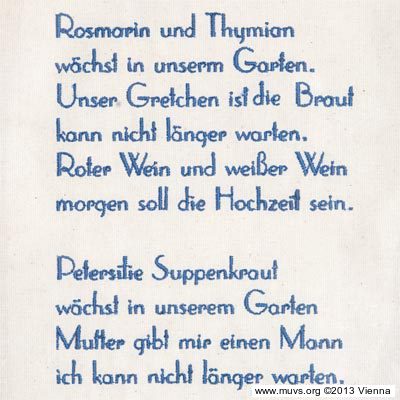Plants
Almost all cultures have used or still use particular plants as a means of birth control. Some folk contraceptives and abortifacients are used on the basis of many years of experiments, observations and practical experience, mostly undertaken when women took the plants to treat various illnesses.
Mentioned here are plant drugs (herbs, fruits, seeds, roots and barks) that are taken orally. Many of the plants that early modern books on midwifery and herbalist medicine report as having contraceptive properties cannot be identified. Poor understanding of anatomy and physiology and misinterpretation of effects have often led to ineffective – or worse, highly poisonous – substances being used.
Laboratory testing of plant contraceptives in the 1970s and 1980s, which was conducted with financial assistance from the World Health Organization, produced a wealth of literature on the efficacy of plant extracts as a means of birth control. However, this research did not lead to the development of modern medicines from plant extracts due to questions over the transferability of the results from animals to people.
After Angelika Zinner in Vom Nimbaum bis zur Pille – Zur kulturgeschichtlichen Vielfalt der Verhütungsmethoden [‘From neem to the pill – On the cultural and historical diversity and contraceptive methods’], by Helga Dietrich and Birgitt Hellmann, Jena 2006

 Aloe vera Linné
lat. Aloe vera
Die Erfolgsgeschichte der Aloe vera reicht über …
Aloe vera Linné
lat. Aloe vera
Die Erfolgsgeschichte der Aloe vera reicht über …
 Sexual names for plants and animals!
A walk in the fresh air through the Botanical Garden …
Sexual names for plants and animals!
A walk in the fresh air through the Botanical Garden …
 Cheese flower
Cheese flower
 Alraune
lat. Mandragora officinarum
Die Alraune wurde schon vor 4000 Jahren …
Alraune
lat. Mandragora officinarum
Die Alraune wurde schon vor 4000 Jahren …
 Mugwort
lat. Artemisia vulgaris
Folklore:
Also known as felon herb, chrysanthemum …
Mugwort
lat. Artemisia vulgaris
Folklore:
Also known as felon herb, chrysanthemum …
 Maiden Tea
This 1920 recipe for what was known as maiden tea is a charming relic from a romanticised feeling of being close to nature.
Maiden Tea
This 1920 recipe for what was known as maiden tea is a charming relic from a romanticised feeling of being close to nature.
 Eibe
lat. Taxus baccata
Eibe
lat. Taxus baccata
 Haselwurz
lat. Asarum europaeum
Die Haselwurz ist seit der Antike als …
Haselwurz
lat. Asarum europaeum
Die Haselwurz ist seit der Antike als …
 Lorbeer
lat. Laurus nobilis
Beim Orakel in Delphi verwendete die Priesterin …
Lorbeer
lat. Laurus nobilis
Beim Orakel in Delphi verwendete die Priesterin …
 Contraception with Plants
On the Rediscovery of an Old Tradition of Self-determined Birth Control.
Contraception with Plants
On the Rediscovery of an Old Tradition of Self-determined Birth Control.
 Mutterkorn
lat. Claviceps purpurea
Der Name Mutterkorn weist auf die Beziehung …
Mutterkorn
lat. Claviceps purpurea
Der Name Mutterkorn weist auf die Beziehung …
 Mutterkraut
lat. Tanacetum parthenium oder Chrysanthemum parthenium
Der Name des Mutterkrauts …
Mutterkraut
lat. Tanacetum parthenium oder Chrysanthemum parthenium
Der Name des Mutterkrauts …
 Pipevine
“It expels the menstrua and foetus when taken as a drink with pepper and myrrh. It works just the same when inserted as a suppository.”
Pipevine
“It expels the menstrua and foetus when taken as a drink with pepper and myrrh. It works just the same when inserted as a suppository.”
 Papaya seeds
“Juice four oranges and add one teaspoon of papaya seeds...."
Papaya seeds
“Juice four oranges and add one teaspoon of papaya seeds...."
 Parsley
Parsley has important medicinal uses in gynaecology and obstetrics.
Parsley
Parsley has important medicinal uses in gynaecology and obstetrics.
 Poleiminze
lat. Mentha pulegium
Die Poleiminze gehört zu den Pflanzen, die …
Poleiminze
lat. Mentha pulegium
Die Poleiminze gehört zu den Pflanzen, die …
 Rainfarn
lat. Tanacetum vulgare oder Chrysanthemum vulgare
Das Gewächs zählte zu …
Rainfarn
lat. Tanacetum vulgare oder Chrysanthemum vulgare
Das Gewächs zählte zu …
 Römische Kamille
lat. Chamaemelum nobile oder Chamomilla romanum oder Anthemis nobilis
Die …
Römische Kamille
lat. Chamaemelum nobile oder Chamomilla romanum oder Anthemis nobilis
Die …
 Rosmarin
Diese alte Kulturpflanze war bereits bei den Griechen der Göttin …
Rosmarin
Diese alte Kulturpflanze war bereits bei den Griechen der Göttin …
 Saffron
“Eating saffron makes one laugh, and if one eats too much, one laughs so much that one is in danger of laughing oneself to death.”
Saffron
“Eating saffron makes one laugh, and if one eats too much, one laughs so much that one is in danger of laughing oneself to death.”
 Schwarze Tollkirsche
lat. Atropa belladonna
Schon die Sumerer verwendeten sie als Heilmittel. …
Schwarze Tollkirsche
lat. Atropa belladonna
Schon die Sumerer verwendeten sie als Heilmittel. …
 Wacholder oder Sadebaum
lat. Juniperus sabina
Wacholder oder Sadebaum
lat. Juniperus sabina
 Weinraute
lat. Ruta graveolens
Die Weinraute durchzieht die medizinische Literatur seit …
Weinraute
lat. Ruta graveolens
Die Weinraute durchzieht die medizinische Literatur seit …
 Wild Carrot
When used as a contraceptive, the seeds are ground or brewed as a tea and taken for several days when having unprotected sex.
Wild Carrot
When used as a contraceptive, the seeds are ground or brewed as a tea and taken for several days when having unprotected sex.